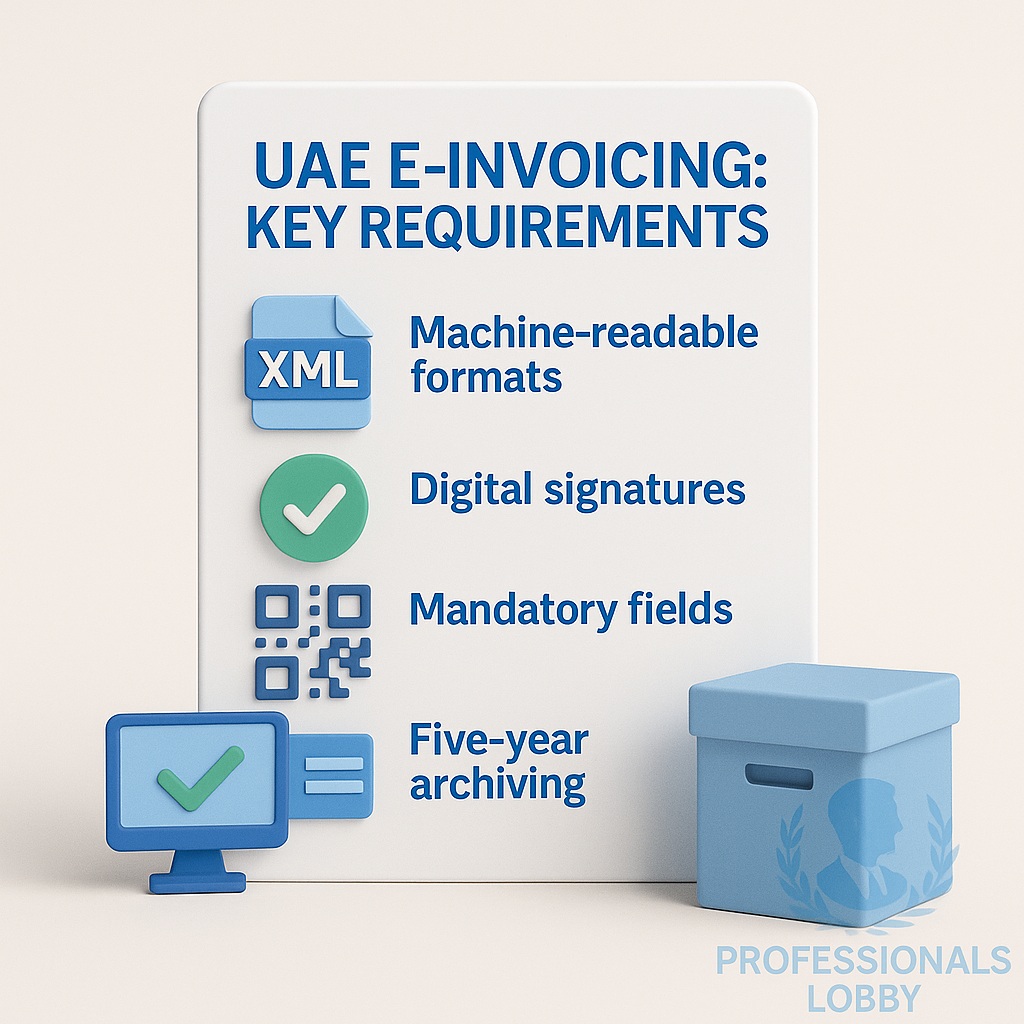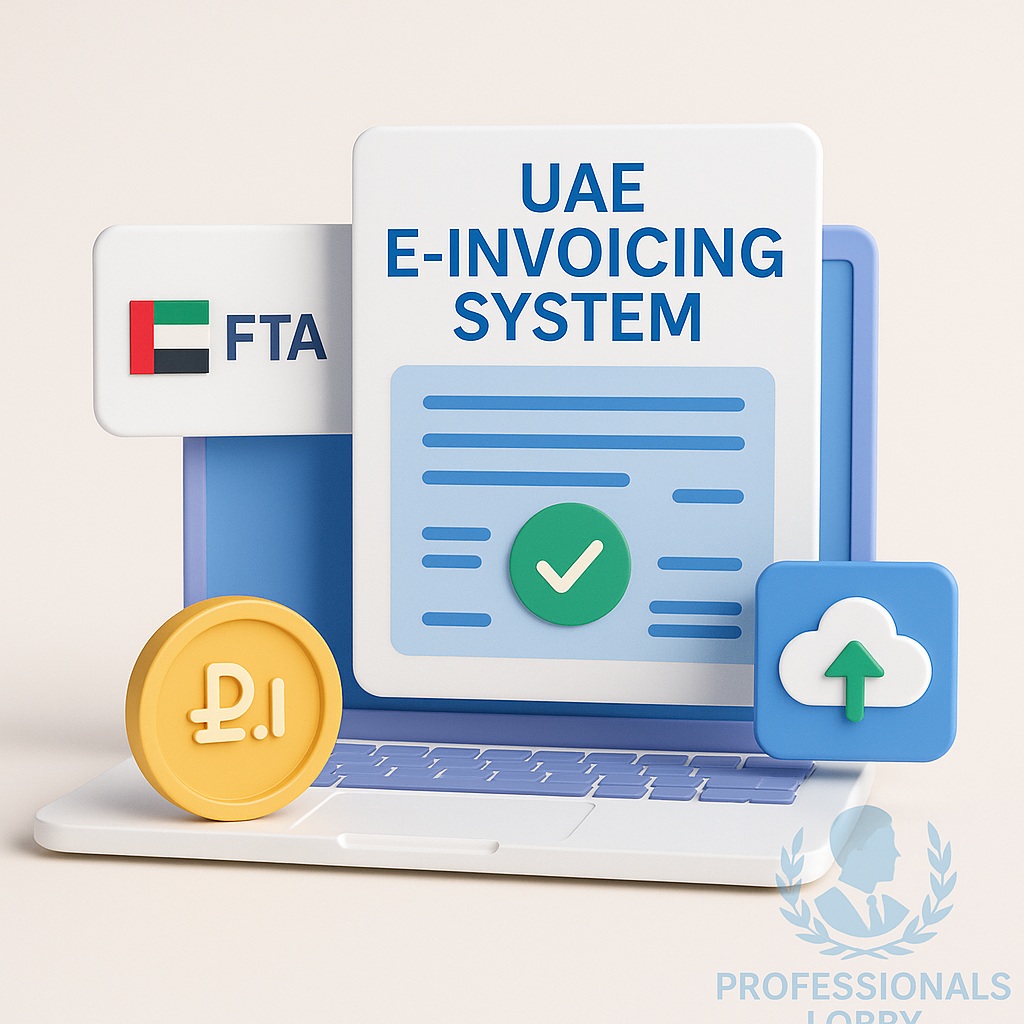The UAE Federal Tax Authority (FTA) is preparing to implement mandatory electronic invoicing (e-invoicing) as part of its digital transformation of tax administration. This comprehensive guide examines what businesses need to know about the upcoming e-invoicing mandate, drawing lessons from Saudi Arabia's ZATCA model and outlining practical steps for compliance.
With the UAE's e-invoicing system expected to roll out in phases starting 2024-2025, companies must begin preparing their ERP systems, accounting processes, and compliance workflows now to avoid penalties and operational disruptions.
The Road to E-Invoicing: UAE vs Saudi Arabia (ZATCA)
Saudi Arabia's successful implementation of e-invoicing through ZATCA provides valuable insights for UAE businesses:
| Aspect | UAE (Expected) | Saudi Arabia (ZATCA) |
|---|---|---|
| Implementation Phases | Likely 2 phases: Voluntary then Mandatory | Generation Phase (Dec 2021) + Integration Phase (Jan 2023) |
| Technical Format | XML/UBL expected with digital signatures | XML/PDF-A3 with QR codes and cryptographic stamps |
| Integration Method | FTA portal or direct API integration | ZATCA Fatoora platform with real-time clearance |
| Penalties | To be announced (expected similar to VAT penalties) | SAR 5,000-50,000 per violation |
Key lesson from ZATCA: Early adopters faced fewer disruptions than last-minute compliers. UAE businesses should begin preparations now.
UAE E-Invoicing: Key Requirements
Based on FTA announcements and regional precedents, UAE e-invoices will likely require:
- Machine-readable formats: XML or UBL (not just PDF)
- Digital signatures or cryptographic stamps for authenticity
- Mandatory fields including QR codes, sequential numbering, VAT details
- Real-time reporting or periodic submission to FTA portal
- Five-year archiving with integrity checks

Expected mandatory fields in UAE e-invoices based on FTA requirements
ERP System Readiness Checklist
Most UAE businesses will need to upgrade their ERP or accounting systems to comply. Essential capabilities include:
- Generate invoices in XML/UBL format (not just PDF/Excel)
- Integrate with FTA systems via API for submission/clearance
- Apply digital signatures and sequential numbering
- Automate QR code generation with required invoice data
- Maintain complete audit trail of all invoice versions
- Support five-year archival with integrity checks
Popular ERP systems in UAE like SAP, Oracle, Microsoft Dynamics, and Zoho are already developing FTA-compliant modules.
Legal & Compliance Considerations
Beyond technical requirements, businesses must address:
Contract Updates
Review customer/vendor contracts for e-invoicing clauses and payment terms
Data Privacy
Ensure GDPR and UAE data protection compliance for invoice data
B2B/B2C Differences
Different rules may apply for business vs consumer invoices
Archival Policy
Implement WORM (Write Once Read Many) storage for audit compliance
Business Benefits of E-Invoicing
While compliance is mandatory, e-invoicing offers significant advantages:
- Faster payments: Digital invoices reduce processing time by 60-80%
- Cost savings: Eliminate paper, printing, and postage costs
- Fewer errors: Automated validation reduces manual entry mistakes
- Better cash flow: Real-time tracking of invoice status
- Simplified audits: Complete digital trail of all transactions
Early adopters in Saudi Arabia reported 30-50% efficiency gains in accounts receivable processes.
Implementation Challenges
Businesses should anticipate and plan for these common hurdles:
System Integration Complexities
Legacy ERP systems may require middleware or custom development to meet FTA requirements, particularly for:
- Digital signature implementation
- Real-time FTA API integration
- QR code generation logic
Change Management
Resistance from staff accustomed to paper/manual processes requires:
- Comprehensive training programs
- Updated SOP documentation
- Gradual phased rollout
AI & Automation in E-Invoicing
Emerging technologies can streamline compliance and add value:
Smart Validation
AI checks for missing fields, incorrect VAT calculations before submission
ERP Integration
ChatGPT-style interfaces help map legacy data to FTA XML schemas
Customer Support
AI chatbots handle common e-invoice queries from customers/vendors
Analytics
Machine learning identifies payment trends and cash flow opportunities
Tools like ChatGPT can assist with template generation, error detection, and compliance documentation.
Step-by-Step Preparation Roadmap
Recommended timeline for UAE businesses:
Assessment Phase
- Gap analysis of current systems
- Vendor evaluation for ERP upgrades
- Budget approval for compliance project
Implementation Phase
- System upgrades and testing
- Process redesign and documentation
- Staff training programs
Go-Live & Optimization
- Pilot testing with select customers
- Full rollout and monitoring
- Continuous improvement
Key Takeaways
The UAE's e-invoicing mandate represents a significant digital transformation for businesses. By learning from Saudi Arabia's ZATCA experience and beginning preparations early, companies can:
- Avoid last-minute compliance risks and penalties
- Leverage technology for operational efficiencies
- Position themselves as digitally advanced partners
Need Help Preparing for UAE E-Invoicing?
Our team of ERP and tax specialists can assess your readiness, recommend solutions, and manage the entire implementation process.
Schedule Compliance Consultation